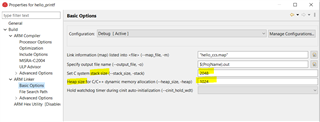Hi
I am facing some interrupt issues.
Using below code, does not trigger my interrupt function.
(The button is pulled high and should go to 0 when pressed, this is confirmed using a scope)
If I change everything to do it polled (reading the pin in a while loop), I can see the correct value.
I suspect something wrong with my code.
(the 'print' function is something that works and is used multiple times within our code and is doing just fine)
void setup_rst()
{
GPIOPinTypeGPIOInput(GPIO_PORTC_BASE, GPIO_INT_PIN_5);
GPIOIntClear(GPIO_PORTC_BASE, GPIO_INT_PIN_5);
GPIOIntRegisterPin(GPIO_PORTC_BASE, GPIO_INT_PIN_5, rst_btn_pressed);
GPIOIntTypeSet(GPIO_PORTC_BASE, GPIO_INT_PIN_5, GPIO_FALLING_EDGE);
GPIOIntEnable(GPIO_PORTC_BASE, GPIO_PIN_5);
}
void rst_btn_pressed()
{
print((uint8_t *) "rst pressed\r\n");
}



